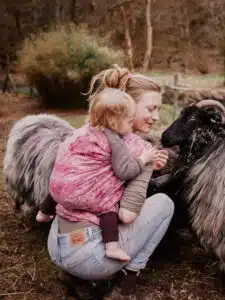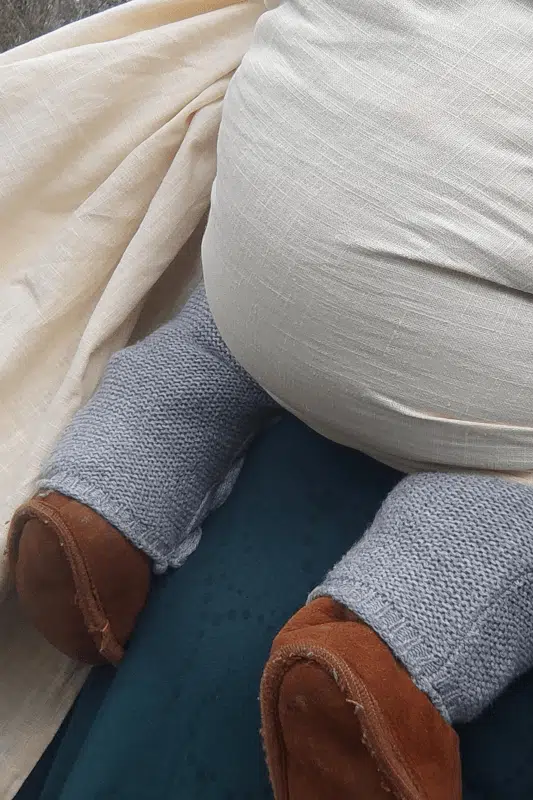Babywearing News
The importance of slings for the bond between parent and child
Early childhood development is a critical phase in a person’s life. During this time, the foundations for emotional well-being, social skills and cognitive development are laid. A key aspect of this development is the bond between the child and their primary carers. Closeness and attachment play a crucial role in how a child perceives and interacts with the world. In this article, we look at the importance of closeness and attachment in the first years of life and their long-term effects.
Table of Contents
How is physical closeness and emotional security linked to babywearing?
Bonding is the emotional connection that develops between a child and their carers. This bond begins in the first few months of life and is characterised by repeated interactions that give the child a sense of safety and security. According to John Bowlby’s attachment theory, a secure bond is the basis for healthy psychological and social growth. Children who develop a secure attachment to their parents or carers generally show less anxiety and stress, higher emotional intelligence and better social skills.
Linen Fabric
Hemp Fabric
Linen Fabric
How does babywearing promote basic trust?
Physical closeness, such as that created by holding, carrying or cuddling, is essential for the development of a secure attachment. Physical contact enables parents to better recognise and respond to their child’s needs. These interactions promote the release of oxytocin, a hormone that reduces stress in both child and parent and increases feelings of closeness and trust.
How does babywearing reduce postpartum depression?
The quality of early bonding has far-reaching effects on a child’s later life. Research shows that children with secure attachments tend to have higher self-esteem, build better relationships with peers and are less prone to mental health problems. A study by Sroufe et al (2005) shows that secure attachment in childhood leads to better social and emotional competence in adulthood.
What are the practical aspects of babywearing?
Closeness and attachment in early childhood also influence brain development. Positive, loving interactions stimulate the development of neural networks that are important for emotional and cognitive learning. Stress and insecurity, on the other hand, can inhibit the development of these networks and lead to long-term negative effects. Secure attachment helps to create a stable and supportive environment that promotes optimal brain development.
What are the long-term effects on the parent-child relationship?
To strengthen the bond with their child, parents can use several strategies:
1. Physical contact: Frequently holding and carrying the baby promotes the release of oxytocin and strengthens the emotional bond.
2. Responsiveness: Responding promptly and lovingly to the child’s signals gives the child a feeling of security and trust.
3. Time together: Spending time with the child, be it playing, reading aloud or simply cuddling, deepens the emotional bond.
4. Rituals and routines: Fixed rituals, such as going to bed, create a stable environment and give the child security.
Conclusion
Closeness and attachment are central elements of early childhood development. They lay the foundation for healthy emotional, social and cognitive growth. Through loving, consistent interactions and physical closeness, parents can build a secure bond with their child that has lifelong positive effects. It is important to recognise the importance of these early relationships and actively encourage them to support the best possible development of the child.
Sources
-
- ¹ A secure basis
Parent-child bonding and healthy human development. Basic Books.
(Bowlby, J. (1988)) - ² The development of personality
The Minnesota Study of Risk and Adjustment from Birth to Adulthood. Guilford Press
(Sroufe, L. A., Egeland, B., Carlson, E., & Collins, W. A. (2005)) - ³ Increased babywearing reduces infant crying
A randomised controlled trial. From *Pediatrics*, 77(5), 641-648.
(Hunziker, U. A., & Barr, R. G. 1986).
- ¹ A secure basis

























